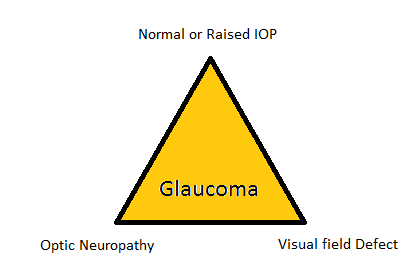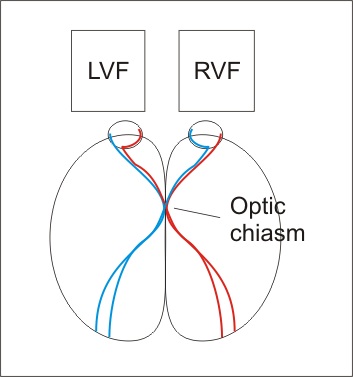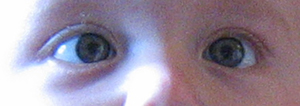The protocol of examination of proptosis may be summarized in the following steps:
1. Introduction and greeting
2. Visual acuity, PHV
3. Torch:
a. Eyes:
i. Pseudoproptosis (contralateral exophthalmos, large globe)
ii. Gross proptosis and Dystopia
iii. Lid retraction
iv. Conjuctival chemosis
v. Facial asymmetery, marks of surgery/trauma
b. Abnormal head posture
c. Nose/roof of mouth
d. Goiter
e. Hirshberg’s
f. Pupil (Direct, consensual, RAPD, anisocoria)
4. Go behind the patient to confirm proptosis:
a. Palpate cervical lymph nodes
b. Palpate thyroid
5. Scale/ Hertel’s Exophathalmometer:
a. Measure proptosis with one scale/ Hertel’s
b. Repeat while patient is asked to perform Valsalva
c. Put one scale on nasal bridge for Horizontal Diplopia
d. Take two scales for Vertical Diplopia
6. Bead Target:
a. EOM (if limitation then ductions should be performed)
b. Second rid lag
c. Force Duction test may be required but should be performed at the end
7. Palpation:
a. Orbital margin with index finger to look for any mass if size, site, shape, Tenderness, Consistency, Transillumination
b. Sinus tenderness
c. Retropulsation with palm of hand
d. Pulsation with index finger
e. Skin temperature
8. Sensation by separate sterile cotton wick:
a. Cornea
b. Skin
9. Ask to close eyes: lagophthalmos
10. Ask not allow to open: Bell’s phenonmenon (separately for each)
11. Stethoscope:
Bruit with bell over globe/carotid
12. Fundoscopy by direct ophthalomoscopy:
a. Disc:
i. Swelling
ii. Atrophy
iii. Optociliary strunts
b. Choroidal folds
13. Slit lamp:
a. Exposure Keratopathy
b. Applanator tonometry (IOP, Differential IOP, pulsation)
14. Miscellaneous:
a. Pulse (Thyrotoxicosis)
b. Temperature
c. Pre-tibial Myxedema
d. Optic Nerve function (CV, Brightness, VF, contrast)
15. Thank the patient for his cooperation
Summary:
Torch–> examine from behind–> scale –> bead –> palpation –> stethoscope –> fundoscopy –> slit lamp –>miscellaneous
Differential Diagnosis: (VEIN)
Vascular (Cavernous fistula, cavernous hemangiomas)
Endocrine (Thyroid eye disease)
Inflammatory (Orbital cellulitis, orbital inflammatory disease)
Neoplastic (ON glioma, ON meningiomas, Lacrimal gland tumours, frontal sinus mucocoele)
 howMed Know Yourself
howMed Know Yourself




